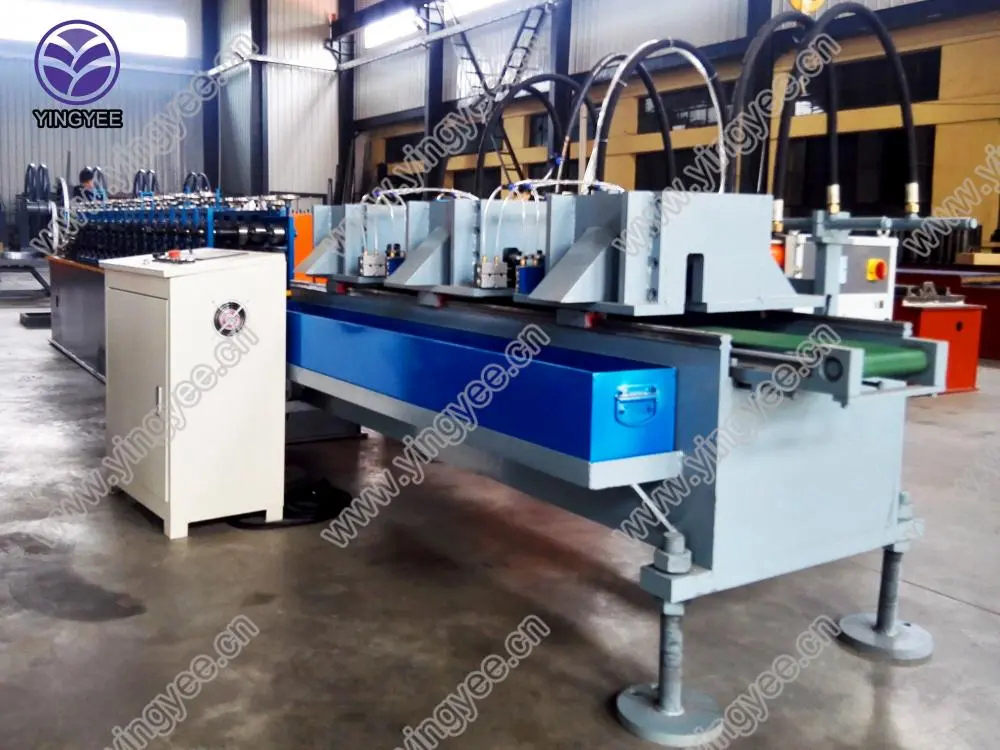
The Importance of Rain Downspout Forming Machines in Modern Construction
In today's rapidly evolving construction industry, efficiency and precision are paramount. Among the myriad of tools and machines that facilitate the building process, the rain downspout forming machine stands out as a critical component for ensuring effective water management systems in modern structures. This article explores the functionalities, benefits, and the role of rain downspout forming machines in enhancing building durability and aesthetics.
Understanding Rain Downspout Forming Machines
A rain downspout forming machine is specifically designed to fabricate downspouts—vertical pipes that channel rainwater from the roof to the ground level. These machines can produce downspouts in various shapes and sizes to suit different architectural styles and functional requirements. Typically, these downspouts are manufactured from materials like aluminum, galvanized steel, or vinyl, which provide durability against environmental elements.
The operation of a downspout forming machine is relatively straightforward. Raw material sheets are fed into the machine, which uses a series of rollers and molds to shape the material into the desired downspout profile. The precision of this process ensures that each downspout fits perfectly with the building's gutter system.
The Benefits of Using Downspout Forming Machines
1. Customization One of the most significant advantages of using a rain downspout forming machine is the ability to create customized downspouts. Different buildings, depending on their architectural design and geographical location, have unique requirements for rainwater management. Forming machines allow builders to tailor downspouts in size, shape, and color, ensuring they integrate seamlessly with the building’s exterior.
2. Cost-Effectiveness Manufacturing downspouts on-site can considerably reduce costs associated with purchasing pre-made components. With a downspout forming machine, construction teams can produce as many downspouts as needed, minimizing waste and transportation costs. This on-the-job fabrication also reduces lead times, allowing projects to move forward without delays.

3. Quality Control By producing downspouts in-house, construction companies maintain greater control over the quality of the materials used. They can ensure that all downspouts are robust enough to withstand harsh weather conditions, thereby prolonging the life of the building and reducing maintenance costs.
4. Efficient Workflow The speed of modern downspout forming machines significantly enhances workflow efficiency. Manufacturers can produce large volumes of downspouts quickly, ensuring that drainage systems are installed in a timely manner. This efficiency not only accelerates the overall construction process but also allows for timely project completion.
Environmental Considerations
Effective water management is crucial in mitigating the effects of stormwater runoff, which can lead to flooding and soil erosion. By integrating downspout systems designed for optimal performance, rain downspout forming machines contribute significantly to environmentally responsible construction practices. Effective drainage systems help to channel water away from foundations, protecting homes and commercial buildings from potential damage.
Construction companies are increasingly recognizing the necessity of sustainability in their practices. By using recyclable materials in the production of downspouts, along with efficient production methods, these machines play a role in reducing the carbon footprint of construction projects.
Conclusion
Rain downspout forming machines represent a vital intersection of technology and construction that enhances efficiency, customization, and sustainability. As the construction industry continues to evolve, these machines will undoubtedly play an integral role in shaping the future of building practices. With the increasing emphasis on environmental responsibility and the need for efficient resource management, investing in advanced forming machines is not just a smart choice; it’s a necessary one. Through their contribution to effective drainage systems, rain downspout forming machines help safeguard buildings, ensuring they withstand the challenges posed by nature while maintaining aesthetic appeal. As the industry moves forward, embracing such innovations will be crucial in building resilient infrastructures for generations to come.